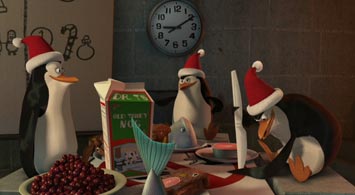Jerry Beck and Amid Amidi at Cartoon Brew are rightly sad about the demise of the big-budget 2D feature. But to me, they seem to be taking it a little too far. It seems like for every bit of news that comes out, they must somehow find a way to use it to denigrate CG animation. When CG films get shut out of the Oscars, it puts a big smile on their faces. Because, you see, CG animation lacks the animator’s individualistic (sic) personality.
Kevan Shorey rightly points out that this just isn’t true. Any halfway-decent animator puts a lot of himself into his shots. When (very occasionally) people tell me they see my body language reflected in the way my characters move, I’m thrilled–nothing could make me happier. And a great animator, well… I can tell a Dan Wagner shot from looking at a single frame, his faces are so memorable and unique!
Everything you make bears the mark of your individual hand. That’s why, even in CG, directors and animation leads still hand-pick certain animators to handle certain shots: they can sense each animator’s affinity for one character, or one kind of acting, over another. What differs between 2D and CG is that in CG, the animator is only responsible for the movement of the character, not the design of the model. But there’s still plenty of room for individuality in the way a character moves.
The question is, is this prized “individualism” really what’s best for the film as a whole? Michael Barrier doesn’t think so. The model of casting-by-shot, he worries, is to blame for the lack of consistency in a character’s performance over a whole film:
…if a half dozen different people animate what is supposed to be the same character, in the same film, then at some level, in some sense, that film is going to contain not six slightly different versions of the same character, but six different characters who look and sound a lot alike. Such variations undermine an audience’s acceptance of the reality of a film’s characters



